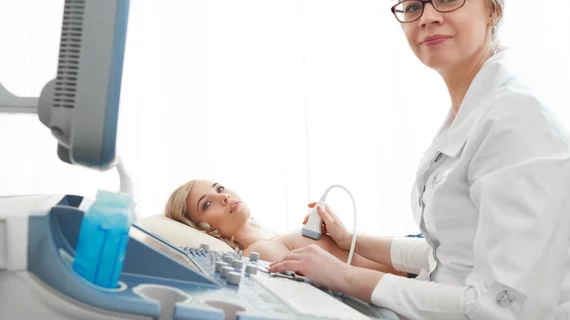‘Startling’ study findings show persistent barrier to follow-up imaging after a mammogram
Out-of-pocket costs continue to serve as a barrier for women who require follow-up tests after their initial mammogram, according to a study published Monday in JAMA Network Open.
Protections within the Affordable Care Act have largely freed patients from having to pay for their regular breast cancer screening. However, that is not the case when individuals require additional tests such as breast MRI or ultrasound.
Based on an analysis of nearly 231,000 commercially insured women, those on plans with higher out-of-pocket costs received significantly fewer subsequent procedures.
“Our results are startling considering the risk posed by an unconfirmed positive mammogram result,” study author Danny Hughes, PhD, of Arizona State University, said in a statement from the Neiman Health Policy Institute announcing the results. “Additional policy changes such as removing cost-sharing for subsequent tests after abnormal screening results or bundling all breast cancer diagnostic testing with screening mammograms into a single payment may provide avenues to mitigate these financial barriers to care and improve breast cancer outcomes.”
Hughes et al. derived their results from the Optum database of claims paid by large commercial Medicare Advantage health plans. Women who met the criteria were 40 years or older, had no prior history of breast cancer and underwent a screening mammogram in 2016. Patients in the study were covered by a total of nearly 23,000 distinct insurance plans handling almost 45 million medical claims.
Women covered by plans that predominantly require co-pays underwent significantly fewer subsequent breast imaging (24 fewer per 1,000 women). Same for plans driven by deductibles (16 per 1,000) when compared to co-insurance plans. And patients from all different types of insurance received fewer breast MRI scans than those covered by plans that charge the lowest out-of-pocket costs, the analysis found. Deductible and co-pay health plans were tied to the highest OOP costs at $1,186 and $1,120, respectively, while co-insurance had the lowest.
“The study’s central finding—that some women who have an abnormal result on a mammogram may not get appropriate follow-up because of cost—is worrisome,” Ilana B. Richman, MD, and A. Mark Fendrick, MD, wrote in a related commentary [2] published March 27. “From a population health perspective, failure to complete the screening process limits the program’s effectiveness and likely exacerbates health disparities. On an individual level, high out-of-pocket costs may directly contribute to worse health outcomes or require individuals to use scarce financial resources that may otherwise be used for critical items such as food or rent.”

